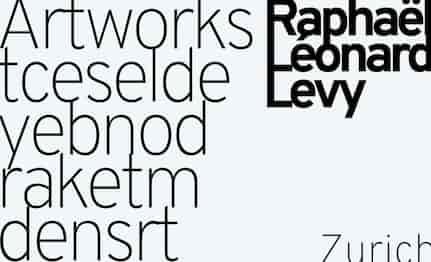CLICK TO VIEW PRESS RELEASE

ANN-CHARLOTTE & STURE JOHANNESSONULRIKE MEINHOF09.06 - 27.06.1976
“On Germany – In Our Time”
Galerie S:t Petri, Lund — 15–22 June 1976
At the Kulturhuset in Stockholm, on the morning of June 11, 1976, an exhibition by Arbetsgruppen U.M. was closed.
The group consisted of the artists Sture Johannesson, Ann-Charlotte Johannesson, and the photographer Ove Hallin.
The exhibition had been open for only two days.
The head of Kulturhuset, Gösta Lilja, together with Stockholm’s municipal cultural committee, justified the closure as follows:
“The essential content of the exhibition corresponded to a poster headline that read ‘About Germany – In Our Time’.”
According to the statement on the exhibition poster, Kulturhuset was to inform constitutional institutions in the country about current tendencies in Europe such as censorship laws, professional bans (Berufsverbot), and the suppression of democratic freedoms and rights.
According to Sture Johannesson, Kulturhuset’s management had already tried to censor the exhibition at its opening on Wednesday.
The director denied this, claiming that it was not a matter of censorship, but of determining whether the exhibition should take place in that space at all.
He maintained that there must be clear agreement between what the committee decides and what is presented.
The artists behind the exhibition “On Germany – In Our Time”, whose poster text was intended to inform about political repression in West Germany, found themselves in Sweden facing another form of suppression — the denial of the right to express themselves freely in word and image.
It is precisely this right to freedom of expression in art that Galerie S:t Petri in Lund now wishes to probe more deeply by taking over the exhibition from Kulturhuset and showing it there from 15–22 June 1976.
With this extreme example, the gallery aims to highlight the conditions of artistic freedom in a democratic society.
Are democratic rights to include such a case?
What is considered taboo in political art?
Clearly, this is not an incitement to violence, since such matters often appear in officially sanctioned exhibitions.
The background to this exhibition, according to Sture Johannesson, lies above all in the diminished possibilities for individuals to take a stand on various issues, as a result of Paragraph 88a and several other new laws in West Germany.
Paragraph 88a, along with the regulation on professional bans, reads as follows:
“Anyone who offers, announces, praises, or disseminates in the country or abroad a text that encourages criminal acts, or is intended to increase the readiness of others to commit such acts, thereby endangering the existence or security of the Federal Republic of Germany, or the principles enshrined in the constitution, shall be sentenced to imprisonment of up to three years or fined.”
“If a person seeking public employment is a member of an organization whose activities are directed against the free democratic basic order, there is doubt as to whether he or she is prepared to defend that order at all times. Such doubt is usually sufficient grounds to reject the application for public employment.”
Earlier this year, members of the West German Writers’ Union visited Sweden and other countries to appeal for collegial solidarity.
The U.M. Working Group sought to give the union concrete support through this exhibition.
The exhibition includes a large photograph of Ulrike Meinhof, flanked by two authentic funeral wreaths from her burial in Berlin — these were found by Sture Johannesson in a rubbish heap near the cemetery.
Images from Meinhof’s arrest and funeral are shown on a television screen.
There are also press clippings about Meinhof and the West German trade union, as well as stenciled excerpts from Ulrike Meinhof’s letters written during her time in solitary confinement.
The exhibition is built in a conceptual form, using fragmented information that each visitor must piece together — thereby grasping the idea, the vision, and the content.
Sture Johannesson emphasizes that the exhibition is not about Ulrike Meinhof as a terrorist, but rather as a cultural critic and journalist.
He says that the U.M. Working Group presents the problems of oppressed and marginalized groups.
He also adds that one does not have to advocate violence in order to defend Ulrike Meinhof.
The exhibition at Galerie S:t Petri is open weekdays 3 p.m.–8 p.m., Saturdays and Sundays 12 p.m.–5 p.m.


